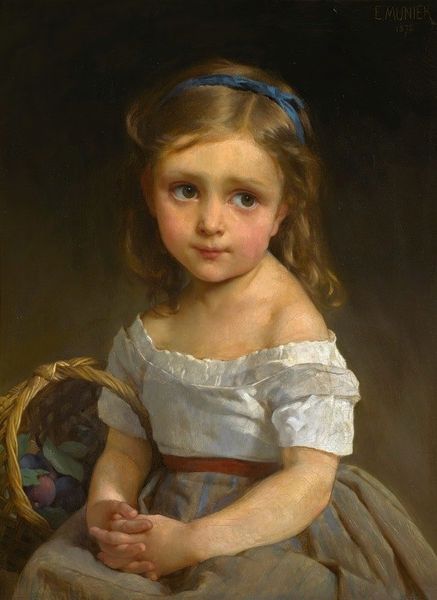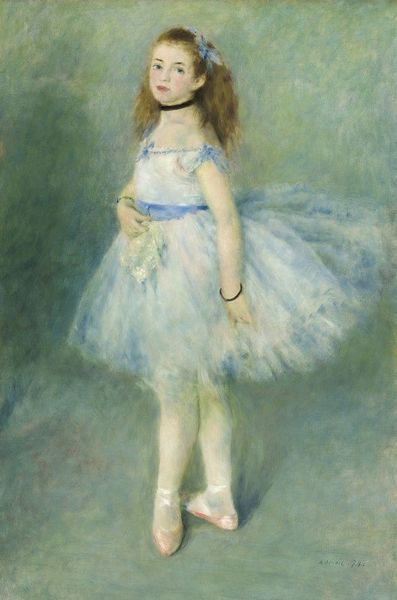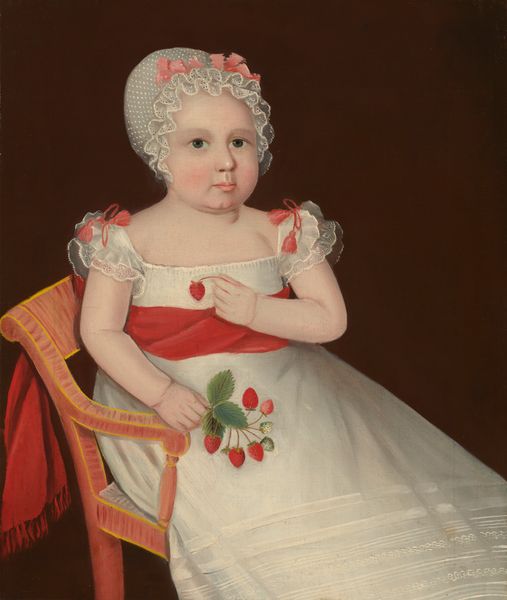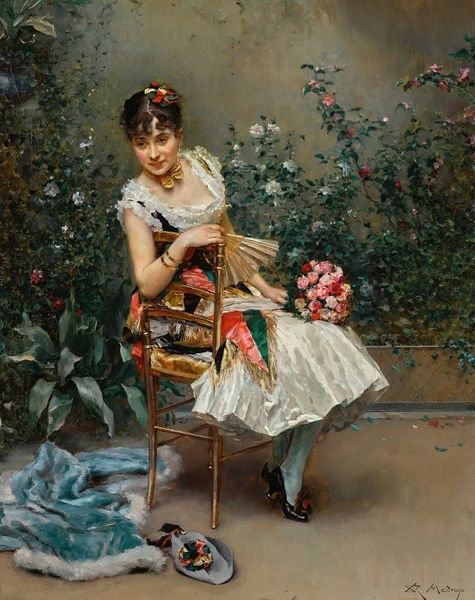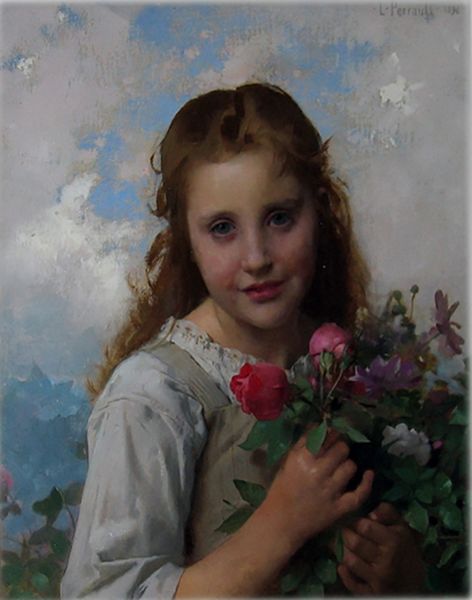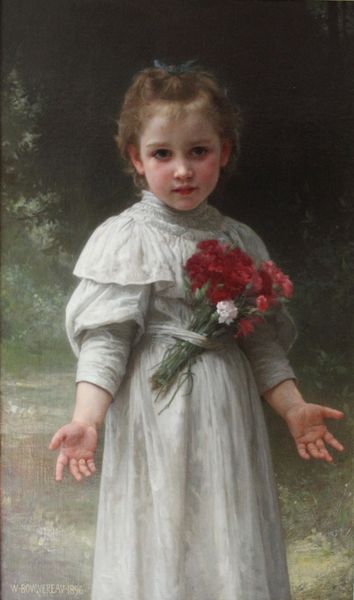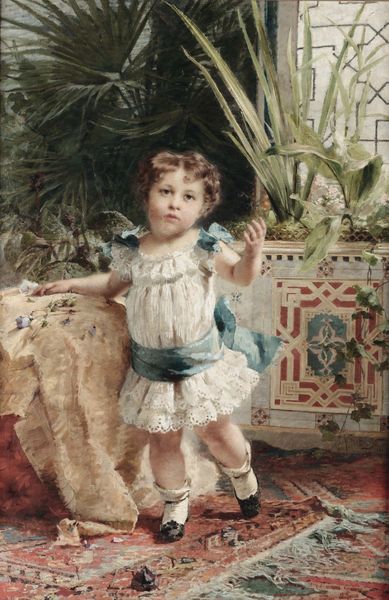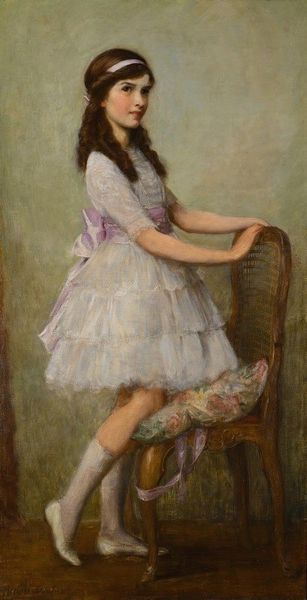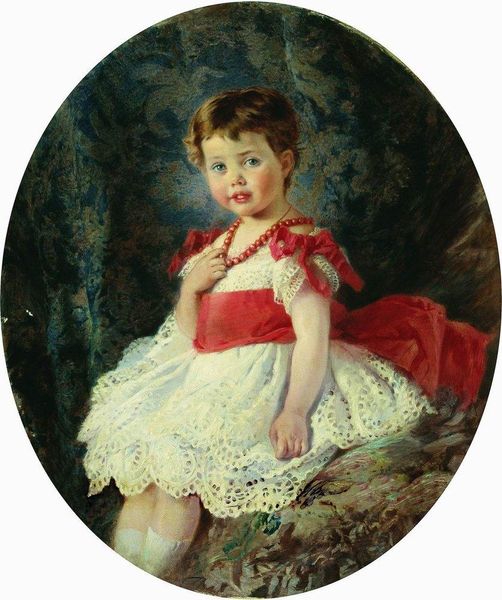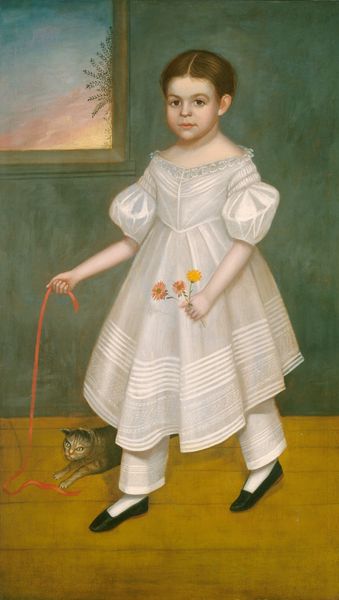
Portrait of Antonietta Negroni Prati Morosini as a child 1858
0:00
0:00
Dimensions: 128 x 110 cm
Copyright: Public domain
Francesco Hayez painted this portrait of Antonietta Negroni Prati Morosini as a child with oil on canvas. The illusionistic quality of Hayez’s painting is what really draws the eye. The detailed brushwork creates a convincing sense of depth and texture, from the soft folds of Antonietta’s dress to the vibrant petals of the surrounding flowers. The artist’s ability to mimic reality was highly prized, and this painting would have been seen as a demonstration of skill and artistry. Beyond its aesthetic appeal, this portrait also speaks to the social context of its time. The elaborate clothing and carefully arranged flowers suggest the wealth and status of the sitter’s family. The painting can be considered as a commodity produced through a system of patronage and artistic labor. The work involved in producing such a detailed and lifelike image would have been considerable, involving not only Hayez’s skill as a painter but also the labor of those who produced the materials and clothing depicted in the scene. Thinking about the painting in terms of materials, making, and social context allows us to see it in a new light, challenging traditional distinctions between fine art and craft and highlighting the complex relationships between art, labor, and society.
Comments
No comments
Be the first to comment and join the conversation on the ultimate creative platform.


